Is a Safari with Kids a Good Idea?
That’s one of the first questions we hear when people learn we took our two boys on a 51-day self-driving safari through Southern Africa. While it may sound intimidating, the experience was unforgettable, for all the right reasons. With a little planning, a good dose of flexibility, and a sense of adventure, taking kids on safari can be one of the most memorable trips you ever do as a family.
But this kind of trip comes with lots of questions. From deciding if your kids are ready, to how to keep them entertained, to staying safe in wildlife areas—there’s a lot to think about. Here’s how we made it work—and how you can too.
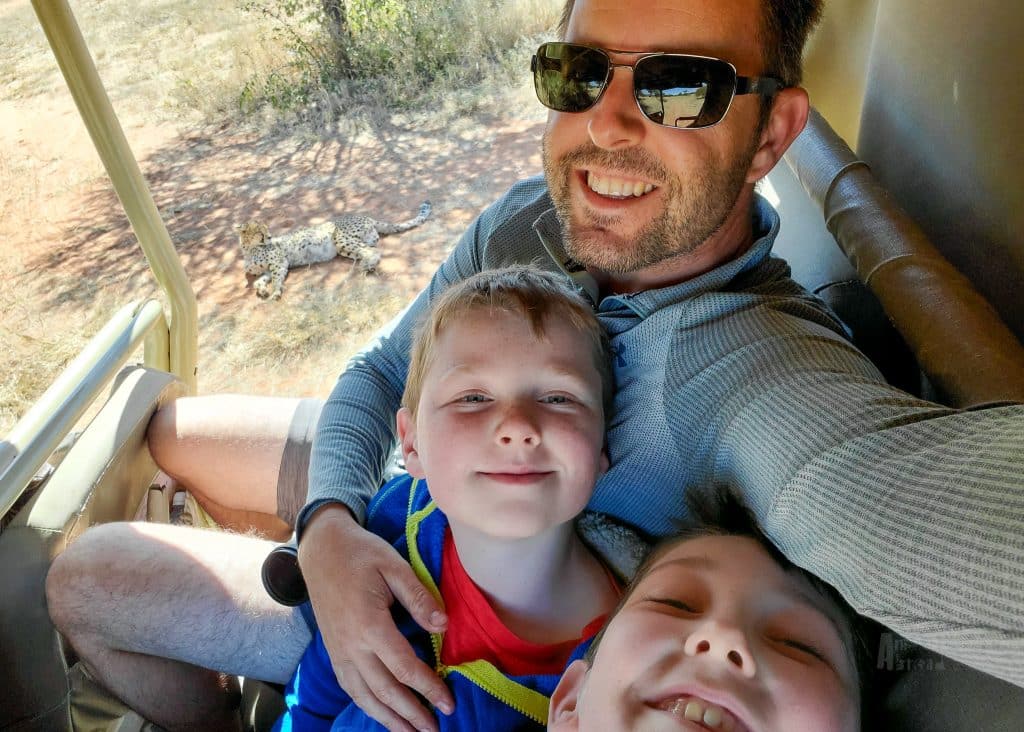
How old should children be to go on safari?
It depends. Safari drives can be long, with stretches where you may not see any animals. Then, once a sighting occurs, children need to be able to sit quietly and observe. Every child is different, and as a parent, you know best if yours is ready. Our boys were 8 and 11 at the time of our trip, and it ended up being the perfect age for them.
Preparing Kids for Safari
Before you go, make sure your kids remember two key things:
1. Stay quiet and calm—sudden movements and screams can frighten animals or draw unwanted attention.
2. The animals are wild and roam freely—this isn’t a zoo, and you may not see any animals on game drives or your favourite animal at all.

In the Parks: Safety and Sightings
How do you stay safe on safari drives?
Whether in your own vehicle or on a guided tour, it’s essential for everyone, especially kids, to stay quiet and still when near wildlife. Loud noises can attract some animals and scare others away, missing potential viewing opportunities. This is particularly true if you are in an open vehicle. One guide explained that animals see the vehicle as one large object. But if someone moves suddenly, it breaks the silhouette, and the animal may take notice.
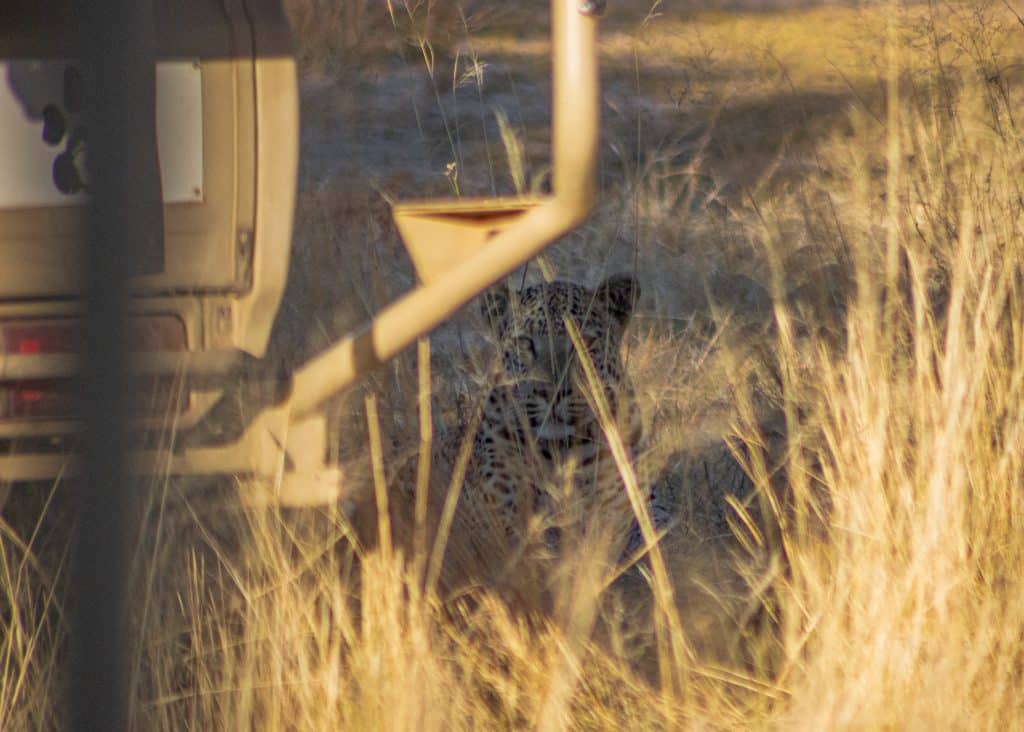
While on a guided drive in an open vehicle in Namibia, our youngest had to sit between two adults for safety, as he might be seen as small prey. At one point, we spotted two leopards resting in the grass. One began creeping toward the vehicle. Our guide revved the engine and nudged forward to assert dominance, and thankfully, the leopard backed off—a powerful reminder of how wild—and real—these experiences are.
Note: This leopard sighting lasted over an hour, and the boys remained still and quiet (no talking) during that time.
How did you keep the kids entertained between sightings?
Let’s be honest, kids (and adults!) can get restless during quiet stretches. Here’s what helped us:
Get them involved: Make a game out of animal spotting. Who will find the first animal of the day? Who will see a new animal? What animal will appear next?
Binoculars: Have a set for them to use.
Animal checklists: Create a list of animals they want to see and let them tick them off. Have them add new animals to their list as they discover them.
Teach them about the Big 5: Originally, poachers coined the term “Big Five” as the five most difficult animals to hunt in Africa. Now, the Big Five (lion, leopard, elephant, rhino, and Cape buffalo) are the five animals people hope to see while on safari. Have kids track which ones they see. Jackson and Mason still brag that they saw all five in just over three weeks—it took us 15 years!
Wildlife books: Give them a wildlife book on the park you’re visiting. Mason loved flipping through his animal book and sharing facts. He’d read about an animal, then check it off when we saw it—instant excitement.
Cameras: Depending on age, give kids a camera and let them take their own safari shots.
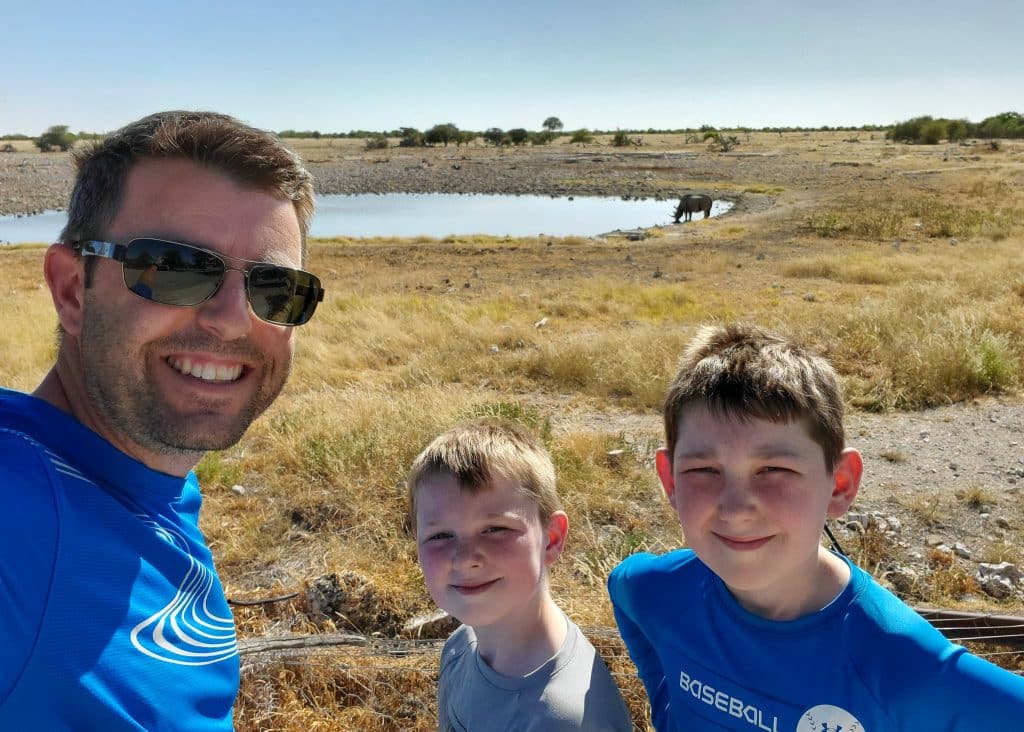
More Safari Tips with Kids
• Bring snacks and water: Game drives can last 3 to 4 hours.
• Use the toilet before leaving: Bring a bottle for emergencies if travelling with younger kids.
• Sun protection: Don’t forget bug spray, sunscreen, and hats.
• Have them pack their own Safari Survival Kit: Animal checklist and wildlife book, pencil, binoculars, camera, flashlight for night drives, water bottle and favourite snack.
Self-driving vs. Guided Tours—What’s Better with Kids?
For our family, self-driving was the best choice. Here’s why:
• We could leave when we wanted, take breaks, and end early if needed.
• We spent as long as we wanted at sightings (or skipped long stops when the kids lost interest).
• We could focus on searching for the animals we were most excited to see.
• It was less expensive, especially over many days.
• It gave us a sense of freedom and adventure.
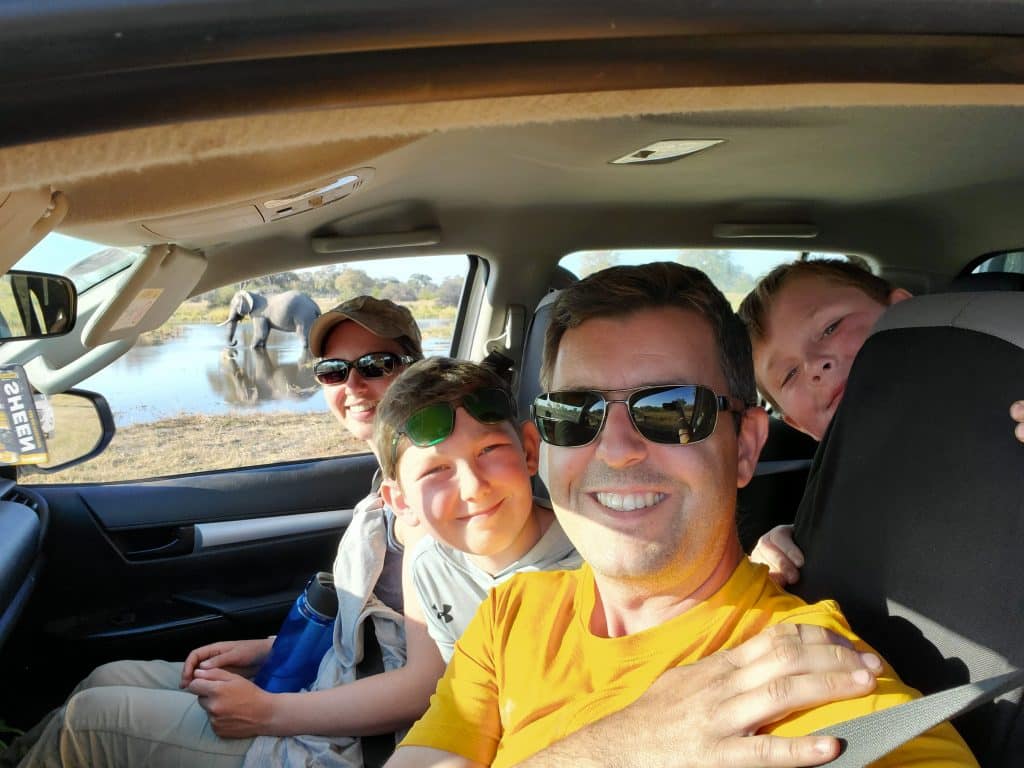
That said, we still recommend doing at least one guided tour. Guides can share their extensive knowledge of the animals in the region (something the kids loved), use radios to track sightings, and provide unique experiences like night drives. Just be aware, some tours can be noisy or rigid, which might not work as well with younger kids.
Note: Namibia and Zambia offered more budget-friendly tours than Botswana.
On the Road
How did you keep the kids busy during long drives between campgrounds?
We tried to keep driving days between 4 to 6 hours. Any longer, and cabin fever kicked in. Here’s what helped:
• Books or e-readers (huge space savers!)
• Homeschooling on the road: The boys did schoolwork during smoother drives.
• Travel games like Yahtzee and Uno.
• Old-school road trip games like I Spy and the license plate game.
• Fun snacks: A stop for chips or ice cream was always popular and helped to break up the day.
• Letting them be goofy: From pretending their stuffed animals were driving to singing the Lion King Soundtrack at the top of their lungs, our boys kept the fun flowing.
Some of our best memories happened on the road—laughing, joking, and bonding with no distractions.
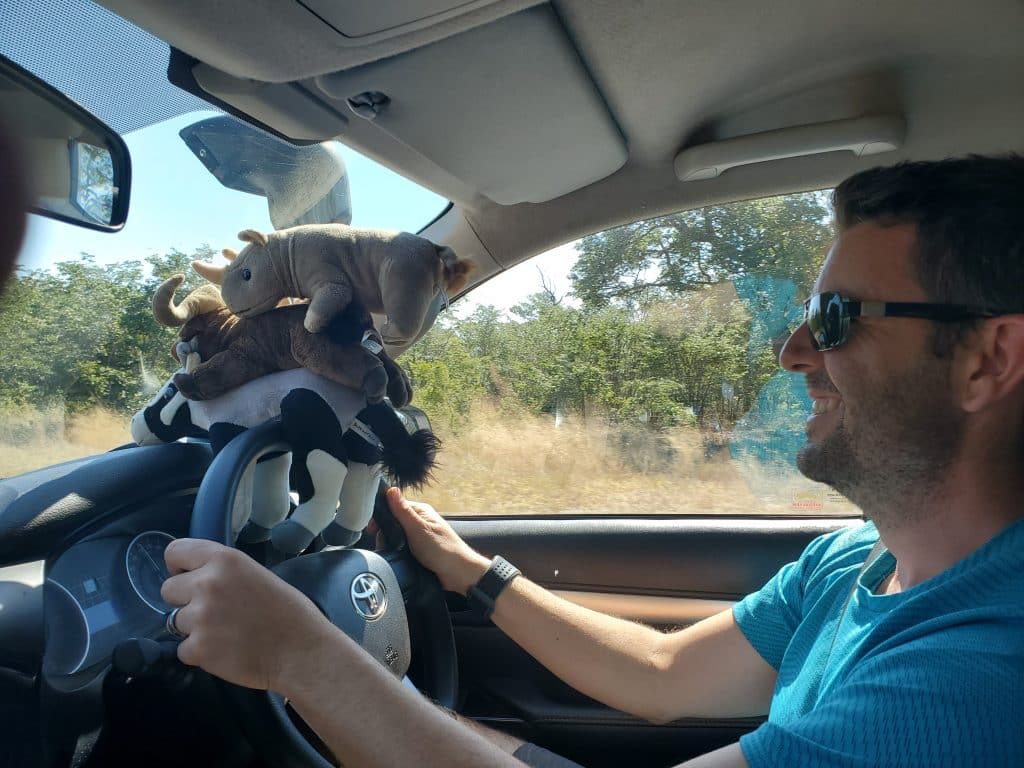
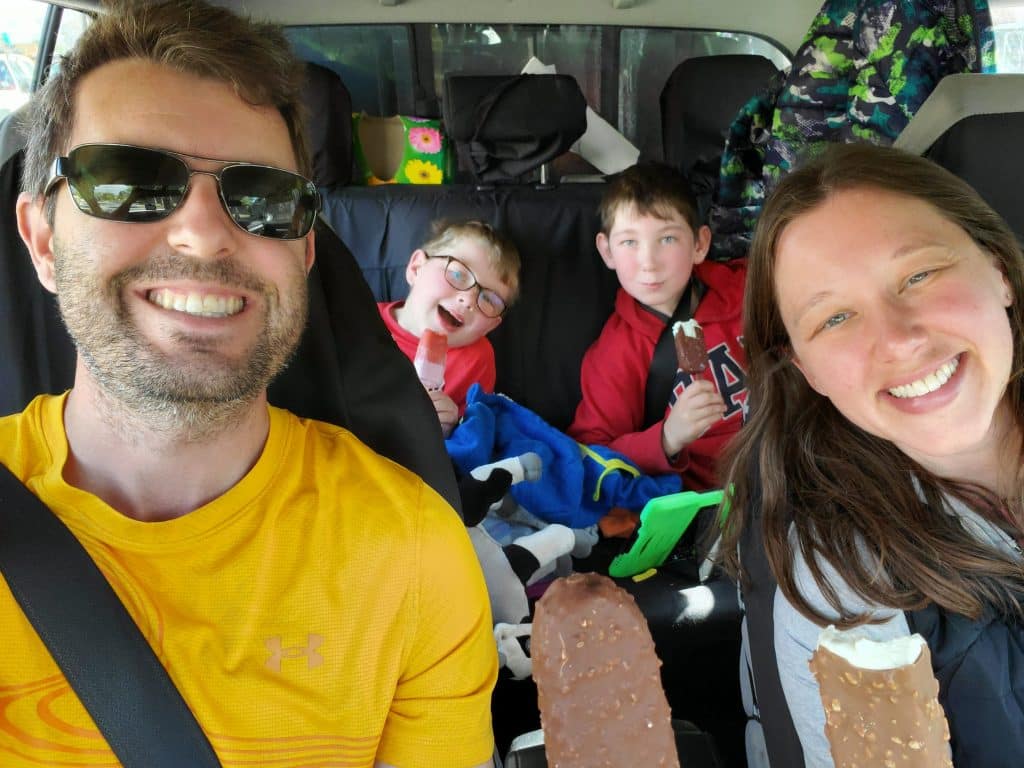
At the Campground
What was it like camping with kids in Africa?
Campgrounds were an adventure in themselves. But unlike back home, many were unfenced, meaning wild visitors could (and did) wander through. During our trip, we saw baboons, elephants, a hyena, and even a leopard in camp. The boys couldn’t just roam like they usually do—they had to stay close and stay alert.
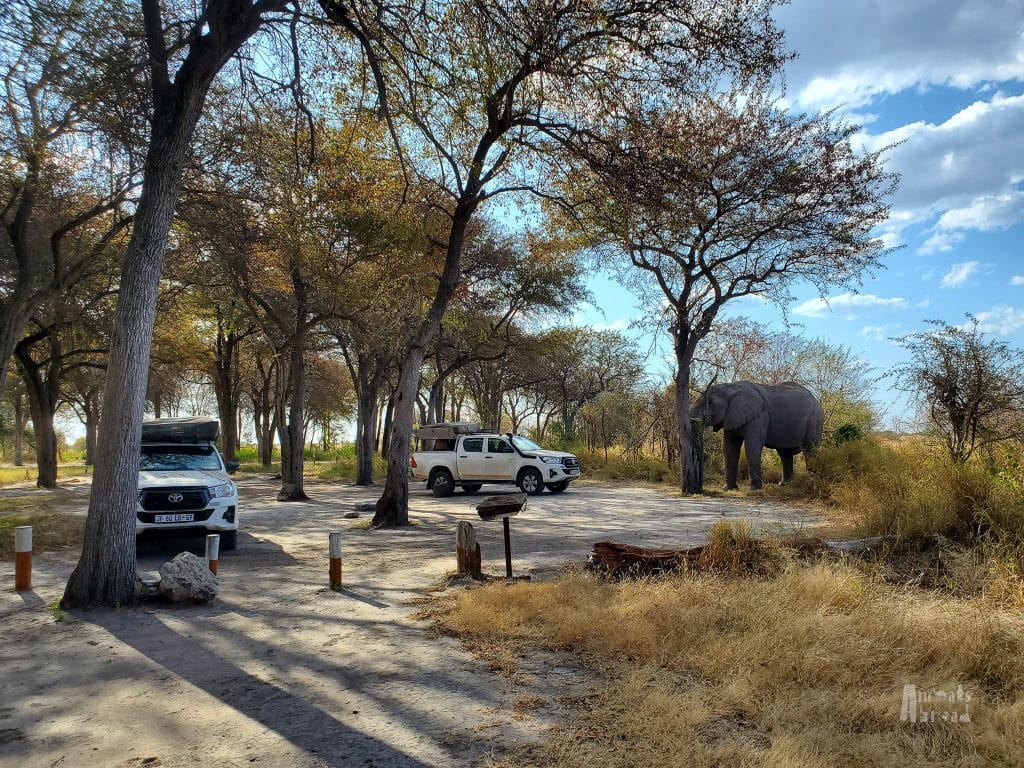
How did you keep the kids entertained?
We gave them jobs around the campsite:
• Organizing the tents (making the beds and bringing up our bags)
• Setting up the camping chairs
• Collecting kindling
• Helping to build the campfire
• Prepping meals (setting the table, gathering supplies, chopping veggies)
• Washing dishes
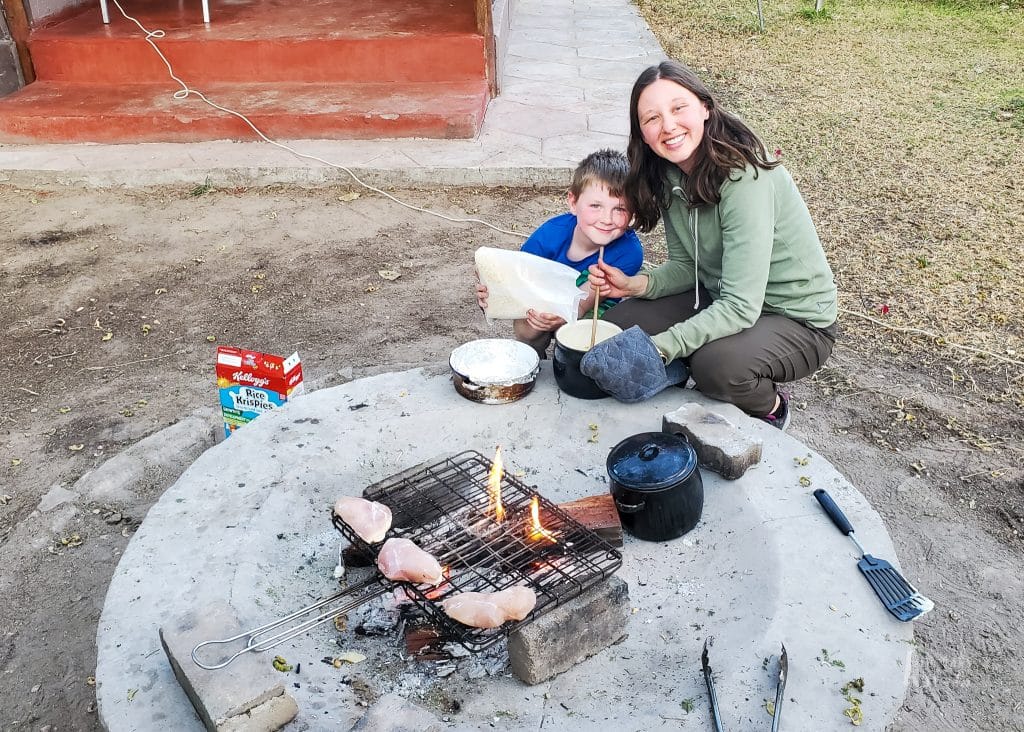
In the evenings, we’d play card games, read in the tents (or play with flashlights), and stargaze around the campfire. They loved identifying constellations and making s’mores.
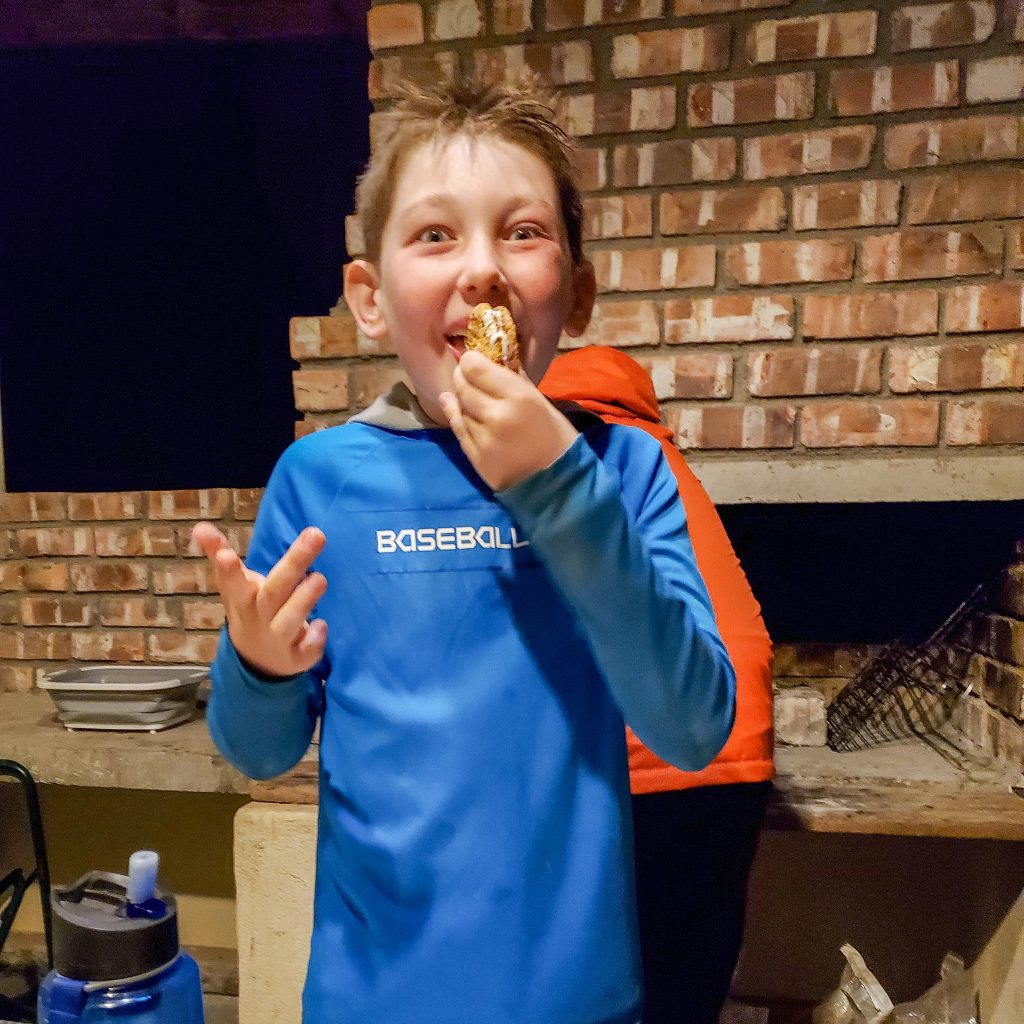
When available, a pool or a reception lounge was a bonus—some even had puppies to cuddle! And yes, we occasionally curled up in the truck for a movie night with snacks and Netflix.
Learn More: Camping Across Southern Africa: A Rundown of our Safari Campsites

So, Would We Do It Again? Absolutely.
A safari with kids isn’t just doable—it can be one of the most rewarding family adventures you’ll ever take. With a bit of prep, the right mindset, and some flexibility, you’ll come away with memories (and animal sightings!) that your kids will never forget.
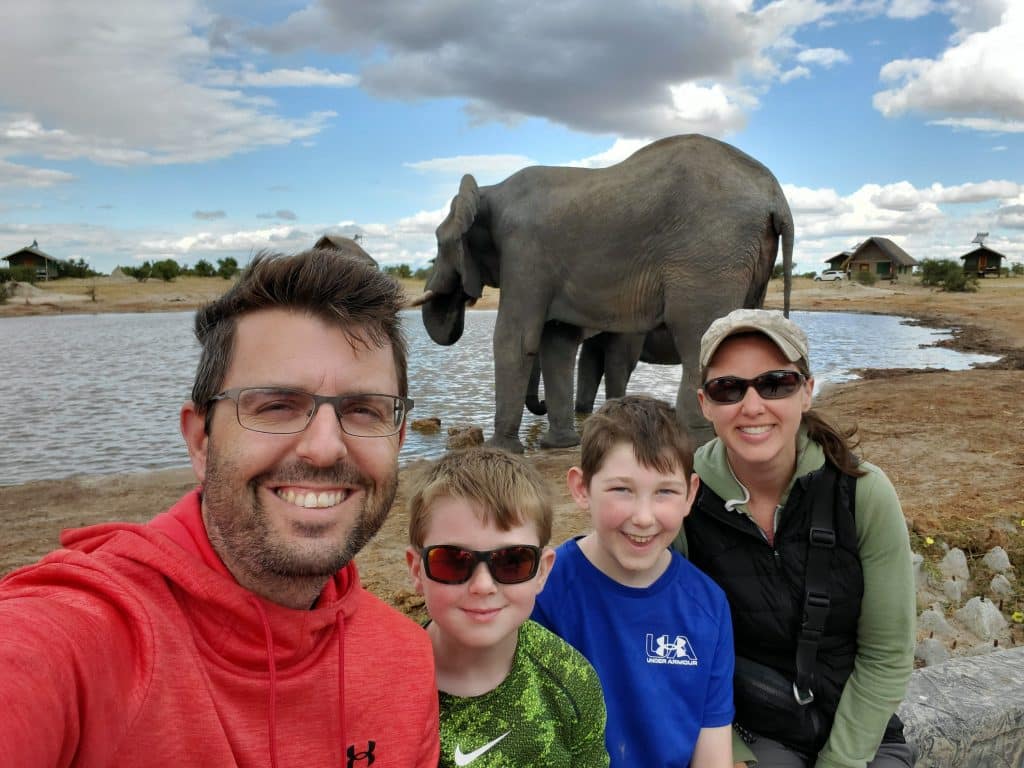
Ready to Start Planning Your Safari Adventure?
Check out these related posts to help plan your trip:
- 51-Day Africa Safari – Part 1: South Africa & Namibia’s Coast
- 51-Day Africa Safari – Part 2: Namibia’s Etosha & Caprivi Strip
- 51-Day Africa Safari – Part 3: Victoria Falls & Botswana
- Our Best and Worst Day on Safari
- Camping Safari in Africa: Know Before You Go
- Camping Across Southern Africa: A Rundown of our Safari Campsites
- Navigating Border Crossings in Southern Africa
- Safari with Kids: Tips from the Road
- Etosha NP with Kids: A Family Safari to Remember
- Exploring the Caprivi Strip with Kids
- Okonjima Family Safari: Where the Wild Things Wait
- The Smoke that Thunders: A Trip to Victoria Falls
- Into the Wild: Chobe NP with Kids
- Sunset Cruise on the Chobe River: A Photo Journey
- Living Giants: A Photo Journey Through Nxai Pan National Park

